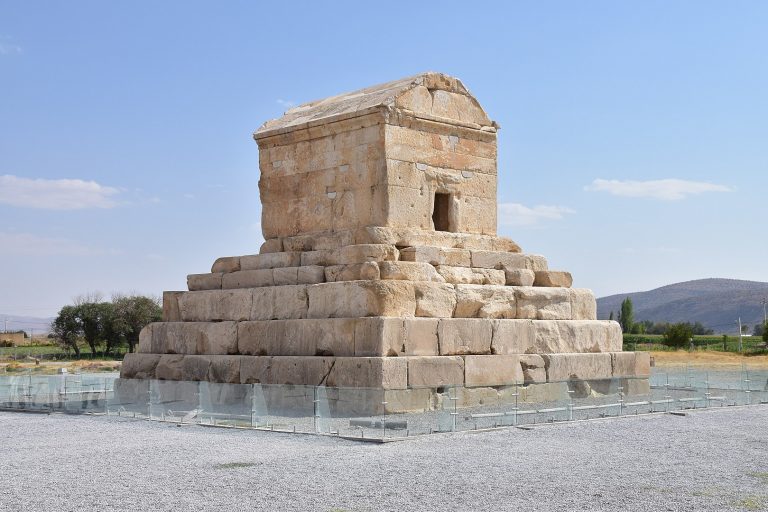From FindaGrave:
Persian Monarch. Leader of the Ancient Persian Empire. He is mentioned in the Old Testament for allowing the Jews to return to Jerusalem. Killed during one of his campaigns to amass more land for the Persian Empire. Believed to have died in 530 B.C.
According to Plutarch, his epitaph said,
“O man, whoever you are and wherever you come from, for I know you will come, I am Kourosh (Cyrus), son of Camboojiyeh(Cambyses), who won the Persians their empire and was king of the East. Do not therefore begrudge me this bit of earth that covers my bones.”
From Anabasis of Alexander:
[Alexander the Great] was grieved by the outrage committed upon the tomb of Cyrus, son of Cambyses; for according to Aristobulus, he found it dug through and pillaged. The tomb of the famous Cyrus was in the royal park at Pasargadae, and around it a grove of all kinds of trees had been planted. The park was also watered by a stream, and high grass grew in the meadow. The base of the tomb itself had been made of squared stone in the form of a rectangle. Above it there was a stone building surmounted by a roof, with a door leading within, so narrow that even a small man could with difficulty enter, after suffering much discomfort. In the building lay a golden coffin, in which the body of Cyrus had been buried, and by the side of the coffin was a couch, the feet of which were of gold wrought with the hammer. A carpet of Babylonian tapestry with purple rugs formed the bedding; upon it were also a Median coat with sleeves and other tunics of Babylonian manufacture. Aristobulus adds that Median trousers and robes dyed the colour of hyacinth were also lying upon it, as well as others of purple and various other colours; moreover there were collars, sabres, and earrings of gold and precious stones soldered together, and near them stood a table. On the middle of the couch lay the coffin which contained the body of Cyrus. Within the inclosure, near the ascent leading to the tomb, there was a small house built for the Magians who guarded the tomb; a duty which they had discharged ever since the time of Cambyses, son of Cyrus, son succeeding father as guard. To these men a sheep and specified quantities of wheaten flour and wine were given daily by the king; and a horse once a month as a sacrifice to Cyrus. Upon the tomb an inscription in Persian letters had been placed, which bore the following meaning in the Persian language: “O man, I am Cyrus, son of Cambyses, who founded the empire of the Persians, and was king of Asia. Do not therefore grudge me this monument.” As soon as Alexander had conquered Persia, he was very desirous of entering the tomb of Cyrus; but he found that everything else had been carried off except the coffin and couch.
By Bernd81 – Own work, CC BY-SA 4.0
Related
Sorry, no records were found. Please adjust your search criteria and try again.
Sorry, unable to load the Maps API.
